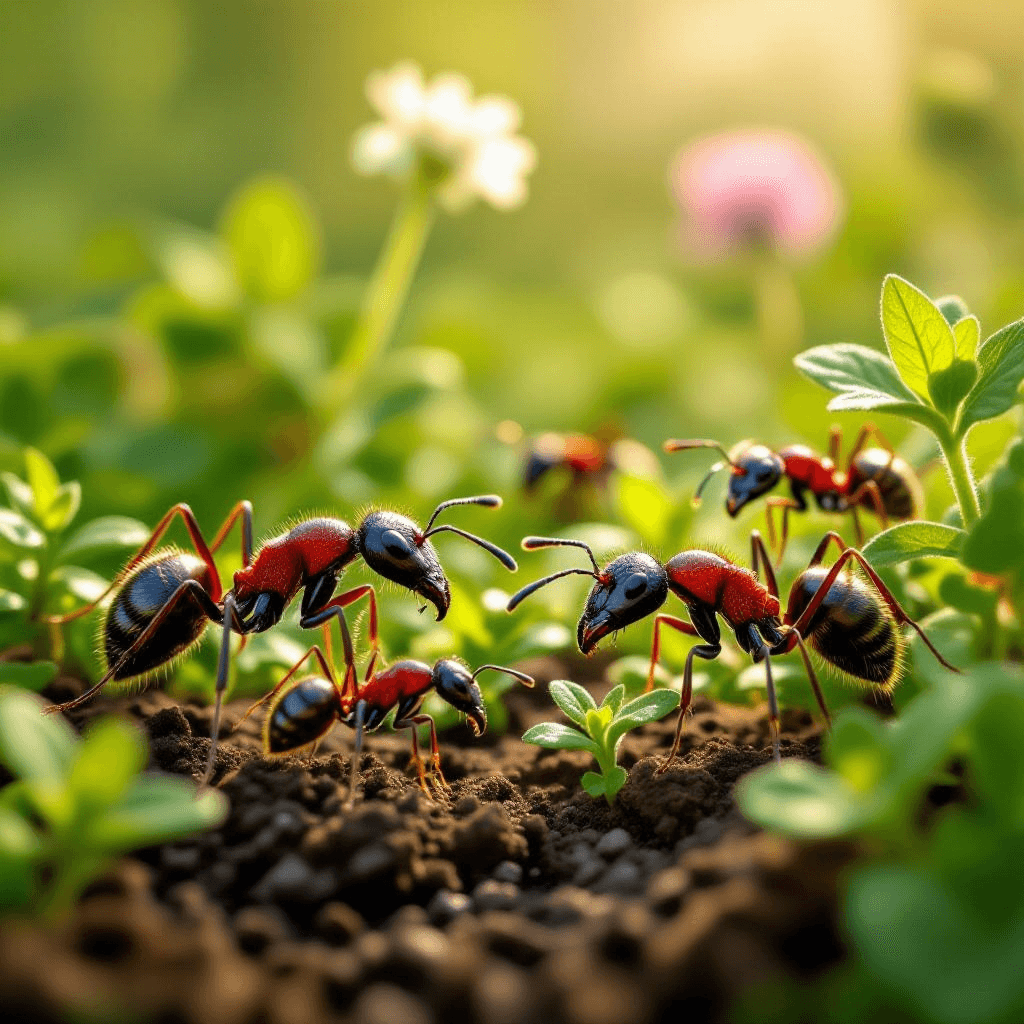Understanding Aphids and Their Impact on Gardens
Aphids, commonly known as plant lice, are small sap-sucking insects belonging to the family Aphididae. They are typically soft-bodied and range in color from green to black, depending on the species. Among the common types found in UK gardens are the Green Peach Aphid (Myzus persicae), the Black Bean Aphid (Aphis fabae), and the Cotton Aphid (Aphis gossypii). These pests primarily thrive on the tender new growth of plants, where they feed on the sap, extracting essential nutrients needed for the plant’s development.
The lifecycle of aphids is characterized by rapid reproduction. Under favorable conditions, a single female aphid can produce numerous offspring asexually, leading to exponential population growth. Typically, their lifecycle includes several stages: from egg to nymph and finally to adult. Nymphs are immature aphids that undergo a series of molts as they mature. These insects can reproduce quickly, especially in warm and temperate climates, making them a persistent problem for gardeners.
Aphid infestations can lead to a range of detrimental effects on garden plants and crops. As they feed on plant sap, they can cause stunted growth, curled leaves, and yellowing foliage—a condition known as chlorosis. Furthermore, their feeding may facilitate the spread of plant viruses, exacerbating the issue for gardeners. Infested plants often exhibit a sticky residue called honeydew, which can lead to sooty mold growth, further harming the aesthetic and health of the plants. Understanding these characteristics and impacts of aphids is essential for gardeners to recognize and address infestations promptly, ensuring the wellbeing of their gardens.
Organic Methods for Aphid Control
Aphids pose a significant challenge for gardeners in the UK, yet various organic methods can effectively manage their populations while promoting environmental safety and sustainability. One of the most effective cultural practices is companion planting, which involves strategically placing certain plants next to each other to deter pests such as aphids. This method not only broadens the garden’s biodiversity but also encourages the presence of beneficial insects. For instance, planting garlic or chives near vulnerable crops can significantly reduce aphid infestations.
Maintaining biodiversity in the garden is another vital organic strategy. A diverse range of plants attracts a myriad of beneficial insects, such as ladybugs and lacewings, which are natural predators of aphids. Introducing such beneficial insects to one’s garden can create a balanced ecosystem, where the presence of natural enemies helps keep aphid populations in check. It is worth noting that the establishment of a habitat rich in diverse flora will enhance the resilience of the garden against aphids and other pests.
In addition to these cultural practices, homemade solutions can also be employed to tackle aphid infestations. A commonly used remedy is a soapy water spray, which can suffocate aphids upon contact. To prepare this solution, simply mix a few drops of liquid soap with water in a spray bottle and apply it directly to infested plants. Neem oil is another potent organic option; derived from the seeds of the neem tree, it disrupts the life cycle of aphids and aids in healing damaged plants. Essential oils, such as peppermint and tea tree oil, are also effective repellents when diluted and sprayed onto affected areas.
Each of these organic methods presents unique benefits, allowing gardeners to address aphid infestations without resorting to chemical pesticides. By implementing such strategies, gardening enthusiasts can foster a healthier environment, ultimately leading to thriving plants and a robust ecosystem.
Chemical Treatments for Aphids: Pros and Cons
Chemical treatments for aphid control are commonly employed in UK gardens, particularly when infestations become severe. These treatments predominantly involve the use of insecticides, which can be classified into two main categories: systemic and contact insecticides. Systemic insecticides are absorbed by the plant and distributed throughout its tissues, effectively targeting sap-sucking insects like aphids that feed on the plant’s juices. In contrast, contact insecticides act upon direct contact with the pests, leading to their death shortly after application.
The effectiveness of chemical treatments can often be observed rapidly, as these products are specifically formulated to eliminate aphids with prompt action. However, the speed of action comes with notable considerations. One of the primary concerns regarding the use of chemical insecticides is their potential harm to beneficial insects. For instance, many chemicals are non-selective and can inadvertently affect pollinators and natural aphid predators, such as ladybirds and lacewings. Therefore, the choice of insecticide is crucial in maintaining ecological balance within the garden.
Moreover, the environmental implications of chemical treatments cannot be overlooked. The runoff from treated areas may impact local waterways, leading to broader ecological consequences. For gardeners prioritizing sustainability, the use of chemical products raises significant questions about environmental stewardship and long-term soil health.
When considering the application of chemical insecticides, it is imperative to follow safety guidelines and application instructions meticulously. Protective gear, such as gloves and masks, should be employed to minimize exposure. Additionally, the treatment should ideally be carried out during the cooler parts of the day to avoid harming beneficial insects while maximizing effectiveness against aphids.
In conclusion, chemical treatments for aphids offer a quick solution for controlling these pests but come with disadvantages that gardeners must carefully weigh. Balancing effectiveness with ecological responsibility remains a key consideration when choosing the appropriate management strategy.
Integrating Organic and Chemical Approaches for Effective Control
Aphid infestations can pose a significant challenge in UK gardens, necessitating a comprehensive strategy that combines organic and chemical methods for effective management. The first step in any aphid control plan is the careful monitoring of pest populations. By regularly inspecting plants, gardeners can identify early signs of infestations and assess the severity of the problem. This vigilance allows for timely interventions, which are crucial for minimizing damage to crops and ornamental plants.
Incorporating organic methods is essential, as they not only target aphid populations but also help maintain biodiversity and protect beneficial insects. Techniques such as introducing natural predators like ladybirds and lacewings, employing neem oil, and using insecticidal soaps can effectively reduce aphid numbers without harming the general ecosystem. Community gardening initiatives in urban areas have shown the importance of fostering natural predator populations to complement organic methods in aphid control.
However, there are instances when organic approaches alone may not suffice. In such scenarios, a judicious application of chemical treatments can be warranted. The key is to implement these methods sparingly and strategically, focusing on targeted products that minimize ecological impact. Timing is critical; applying chemical insecticides when aphid populations are most vulnerable can enhance their effectiveness while limiting disruption to non-target species.
Several successful case studies in UK gardens illustrate the benefits of an integrated pest management (IPM) approach. These examples highlight how gardeners have employed a combination of organic interventions followed by selective chemical treatments to achieve optimal aphid control. Ultimately, a balanced strategy that prioritizes organic methods while being open to chemical options as a last resort can lead to sustainable and effective management of aphid populations.


